- 17 MAI
- TUNISIE – Lamta - - An ancient Roman cemetery has been uncovered by archeologists in Tunisia south of the capital, Tunis. The cemetery was found in Lamta, near the coastal town of Monastir, 160 km south of the capital, and is believed to be the only one of its kind discovered in the North African country. The latest archeological treasure was discovered by a team of experts led by Ne'jib Belazreg, director of archeological sites at Lamta and Bekalta. The cemetery was found near funerary rooms linked to the Punic civilisation based in the Tunisian city of Carthage which was conquered by the Romans in the Punic Wars that ended in 146 BC. The find confirmed previous studies that showed that Romans preferred cremation until the third century A.D and preserved the ashes in terracotta urns.
http://www.lagazzettadelmezzogiorno.it/notizia.php?IDNotizia=424775&IDCategoria=2694
- TURQUIE – 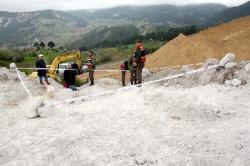 Kutahya - Turkish road workers found 2000 years old tomb during the road rehabilitation works in Southern Turkish city of Kutahya on Monday. Road workers who unearthed ancient tomb near the Aydogdu village of Kutahya. They also found skeleton shoes and socks. Kutahya Museum Director Metin Turktuzun said they found burial chambers which dates back two thousands years old. "We found many ceramic, porcelain plates and water jugs. Kutahya's history dated back the early ancient period and our city is very rich in the fields of history," Turktuzun noted. Museum Director Turktuzun also noted that tomb has two rooms walls wall of the tomb full of the red paint figures. "The burial structure of the front door enters a small room. Inside, there are three-digit threshold. The front room, vaulted over the square-shaped. Tomb is 3 meters height, 2.5 meters width, 4 feet high," added Turktuzun.
Kutahya - Turkish road workers found 2000 years old tomb during the road rehabilitation works in Southern Turkish city of Kutahya on Monday. Road workers who unearthed ancient tomb near the Aydogdu village of Kutahya. They also found skeleton shoes and socks. Kutahya Museum Director Metin Turktuzun said they found burial chambers which dates back two thousands years old. "We found many ceramic, porcelain plates and water jugs. Kutahya's history dated back the early ancient period and our city is very rich in the fields of history," Turktuzun noted. Museum Director Turktuzun also noted that tomb has two rooms walls wall of the tomb full of the red paint figures. "The burial structure of the front door enters a small room. Inside, there are three-digit threshold. The front room, vaulted over the square-shaped. Tomb is 3 meters height, 2.5 meters width, 4 feet high," added Turktuzun.
http://www.worldbulletin.net/?aType=haber&ArticleID=73851
- PAKISTAN – Jhelum - Archaeologist Ghulam Akbar Malik found a valuable manuscript of the Holy Quran dating back to the 12th century while on an excavation trip in Jhelum. This 900-year-old manuscript is written on Papyrus, which was first invented and used by the Chinese before the invention of modern paper. According to the archaeologist this ancient script of the Quran has been written by Sirajuddin abu Tahir Muhammad bin Muhammad bin Abdur Rasheed during the 12th century. This calligraphic object of art weighs around five kilogrammes and consists of 1,200 pages although in some places the handwritten text has faded as a result of aging. Experts estimate that this manuscript is the work of three calligraphers who produced the copy of the Quran in just over a year.
http://tribune.com.pk/story/170198/lost-treasure-900-year-old-manuscript-of-holy-quran-found/
- ROUMANIE – 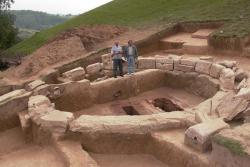 Rosia Montana - In a letter addressed to Prime Minister of Romania Emil Boc, Europa Nostra urged the Romanian Government to ensure the highest level of protection of the unique cultural and natural heritage of the Rosia Montana area. “Experts agree that Rosia Montana has an outstanding heritage value, not only for Romania, but for the whole of Europe. We are sure that your government will therefore wish to safeguard this heritage for present and future generations, and to promote a sustainable long-term development strategy which will provide a viable future for the community living in the area,” stressed Europa Nostra Executive President Denis de Kergorlay, in his letter. More specifically, Europa Nostra recommends that Romanian Minister of Culture Keleman Hunor, formally include Rosia Montana in the country’s Tentative List for World Heritage Sites and forwards this proposal to UNESCO in time to be considered by this year’s meeting of the World Heritage Committee in Paris in June.
Rosia Montana - In a letter addressed to Prime Minister of Romania Emil Boc, Europa Nostra urged the Romanian Government to ensure the highest level of protection of the unique cultural and natural heritage of the Rosia Montana area. “Experts agree that Rosia Montana has an outstanding heritage value, not only for Romania, but for the whole of Europe. We are sure that your government will therefore wish to safeguard this heritage for present and future generations, and to promote a sustainable long-term development strategy which will provide a viable future for the community living in the area,” stressed Europa Nostra Executive President Denis de Kergorlay, in his letter. More specifically, Europa Nostra recommends that Romanian Minister of Culture Keleman Hunor, formally include Rosia Montana in the country’s Tentative List for World Heritage Sites and forwards this proposal to UNESCO in time to be considered by this year’s meeting of the World Heritage Committee in Paris in June.
http://www.artdaily.com/index.asp?int_sec=2&int_new=47424
- FRANCE – 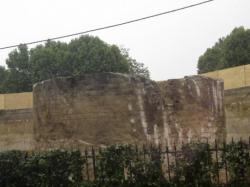
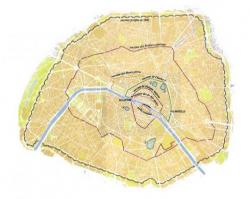 Paris - Après avoir réduit en miette le pont de la porte de vitry , entraînant la disparition de la voie ferrée - la petite ceinture, secteur porte d'ivry jusqu'au pont de bercy- , le chantier du tramway est tombé sur une tour. Vestige d'un mur d'enceinte construit de 1841 à 1844, cette tour se trouve au croisement de la rue de Patay et de la rue Régnault. A l'origine ces fortifications devaient sauver Paris des Allemands. Lors de sa construction , la gauche de l'époque à vivement protesté en brandissant le fait que ces enceintes n 'étaeint pas destinées à protéger Paris mais protéger les Français des parisiens qui seraient tentés par une petite insurrection, une contestation. Force est de constater qu'en 1871 , la France avait perdue une guerre, et que les parisiens et parisiennes ( une partie) communards se sont retrouvés prisonnier du rempart protecteur. Ironie suprême...c 'est Thiers qui a demandé la construction, il a participé à sa destruction partielle durant le deuxième siège de paris en 1871.
Paris - Après avoir réduit en miette le pont de la porte de vitry , entraînant la disparition de la voie ferrée - la petite ceinture, secteur porte d'ivry jusqu'au pont de bercy- , le chantier du tramway est tombé sur une tour. Vestige d'un mur d'enceinte construit de 1841 à 1844, cette tour se trouve au croisement de la rue de Patay et de la rue Régnault. A l'origine ces fortifications devaient sauver Paris des Allemands. Lors de sa construction , la gauche de l'époque à vivement protesté en brandissant le fait que ces enceintes n 'étaeint pas destinées à protéger Paris mais protéger les Français des parisiens qui seraient tentés par une petite insurrection, une contestation. Force est de constater qu'en 1871 , la France avait perdue une guerre, et que les parisiens et parisiennes ( une partie) communards se sont retrouvés prisonnier du rempart protecteur. Ironie suprême...c 'est Thiers qui a demandé la construction, il a participé à sa destruction partielle durant le deuxième siège de paris en 1871.
http://www.lepost.fr/article/2011/05/14/2494544_paris-archeologique-decouverte-d-une-tour-de-l-enceinte-de-thiers-sur-le-chantier-du-tramway-porte-de-vitry.html
- FRANCE – 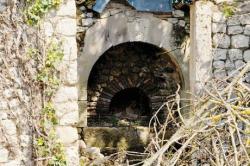 Blanzac-Porcheresse - Soucieuse de la sauvegarde du petit patrimoine, la commune a décidé d'acquérir sur Porcheresse, une parcelle dotée d'un vieux four de type gallo-romain à proximité de la chapelle des Templiers. Si la bâtisse est en ruine, le four, lui, est en parfait état avec une voûte et une sole très bien conservées.
Blanzac-Porcheresse - Soucieuse de la sauvegarde du petit patrimoine, la commune a décidé d'acquérir sur Porcheresse, une parcelle dotée d'un vieux four de type gallo-romain à proximité de la chapelle des Templiers. Si la bâtisse est en ruine, le four, lui, est en parfait état avec une voûte et une sole très bien conservées.
http://www.sudouest.fr/2011/04/27/la-commune-acquiert-un-vieux-four-gallo-romain-382131-1180.php
- FRANCE - Mouliets-et-Villemartin - En ce temps-là, Bordeaux n'était pas encore Burdigala. Les fouilles entreprises pendant les travaux du tram et depuis ont certes révélé un petit trésor de monnaie du Ier siècle avant notre ère (trésor mesuré, toutefois : 130 pièces…) et une belle tête carrée à bacchantes sous le Grand Hôtel. Mais la Gironde gauloise était surtout peuplée à l'est, vers la vallée de la Dordogne. C'est bien en Gironde que se trouve le site le mieux renseigné du deuxième âge du fer, entre 450 et 50 avant notre ère. À Mouliets-et-Villemartin, dans le Castillonnais précisément. Le site Lacoste y a été découvert en 1954 et a fait l'objet de plusieurs campagnes depuis. La dernière a eu lieu en 2007, au moment où la société TIGF creusait une tranchée pour son gazoduc vers le Sud-Gironde. À vrai dire, les archéologues n'ont rien remonté de très spectaculaire. Des fibules, des petits bouts de parure, des outils en morceaux. Mais fouiller les déchets leur en a appris assez pour comprendre que Lacoste était un lieu important pour l'artisanat des métaux. Nos Gaulois de Gironde y fabriquaient des bijoux en quantité, et probablement quelques armes, en fer et en alliage de bronze. Et comme ils étaient situés au carrefour entre les territoires des Bituriges Vivisques (les futurs Bordelais), des Petrucores (les Périgourdins d'aujourd'hui) et des Nitiobroges vers le Lot-et-Garonne, ils expédiaient partout leur production artisanale. Si ça se trouve, la Falbala d'Astérix a porté un bracelet made in Gironde !
http://www.sudouest.fr/2011/05/16/asterix-en-gironde-399211-2780.php
- USA – Connecticut - Connecticut State Archaeologist Nicholas Bellantoni says about 80 percent of the state's estimated 6,000 identified archaeological sites have been destroyed over time by subdivisions, strip malls and roads. Some date back more than 9,000 years, including fossilized mastodon remains and makeshift tools from early nomadic Paleo-Indian hunting groups.
http://www.therepublic.com/view/story/d4dd2c9a1bc742c982ac2086fc942d40/CT--Conn-Archaeology/
- ROYAUME-UNI – 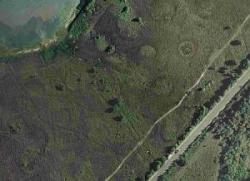 Studland - These intriguing round marks in the heath at Studland are definitely not crop circles – but what they are remains a mystery. Nestling in the heath near Poole Harbour, the 80 circles with an average size of 20 metres across are obviously man-made and have 2ft high turf walls around them. Fifteen possible explanations for the mysterious marks were put forward at a recent Poole seminar, where audience members came up with a further five. Research carried out by the Poole Harbour Heritage Project reveals that the circles, which run parallel to Ferry Road on the east side, were first recognised in 1860 and thought to be prehistoric hut circles. Some hold water and some have entrances and they are thought to be at least 300 years old. Another interesting theory is they were dug out in the 17th or 18th century as weathering pots for seaweed. This is plausible as with rain washing out the salt, seaweed would make good fertiliser for the poor soil of the Purbeck hills. As smuggling was rife along the Dorset coast in those days, it has also been suggested they would make good hiding places from the revenue men for barrels of rum and brandy. Theories range from seasonal huts for fishermen, military training in the Napoleonic War, duck decoys, gravel pits, sheep dips, herb or bee gardens, salt pans, connected with copperas (iron sulphate) production, peat cutting and clay pits.
Studland - These intriguing round marks in the heath at Studland are definitely not crop circles – but what they are remains a mystery. Nestling in the heath near Poole Harbour, the 80 circles with an average size of 20 metres across are obviously man-made and have 2ft high turf walls around them. Fifteen possible explanations for the mysterious marks were put forward at a recent Poole seminar, where audience members came up with a further five. Research carried out by the Poole Harbour Heritage Project reveals that the circles, which run parallel to Ferry Road on the east side, were first recognised in 1860 and thought to be prehistoric hut circles. Some hold water and some have entrances and they are thought to be at least 300 years old. Another interesting theory is they were dug out in the 17th or 18th century as weathering pots for seaweed. This is plausible as with rain washing out the salt, seaweed would make good fertiliser for the poor soil of the Purbeck hills. As smuggling was rife along the Dorset coast in those days, it has also been suggested they would make good hiding places from the revenue men for barrels of rum and brandy. Theories range from seasonal huts for fishermen, military training in the Napoleonic War, duck decoys, gravel pits, sheep dips, herb or bee gardens, salt pans, connected with copperas (iron sulphate) production, peat cutting and clay pits.
http://www.bournemouthecho.co.uk/news/9029523.Mystery_over_circles_on_Studland_heath/